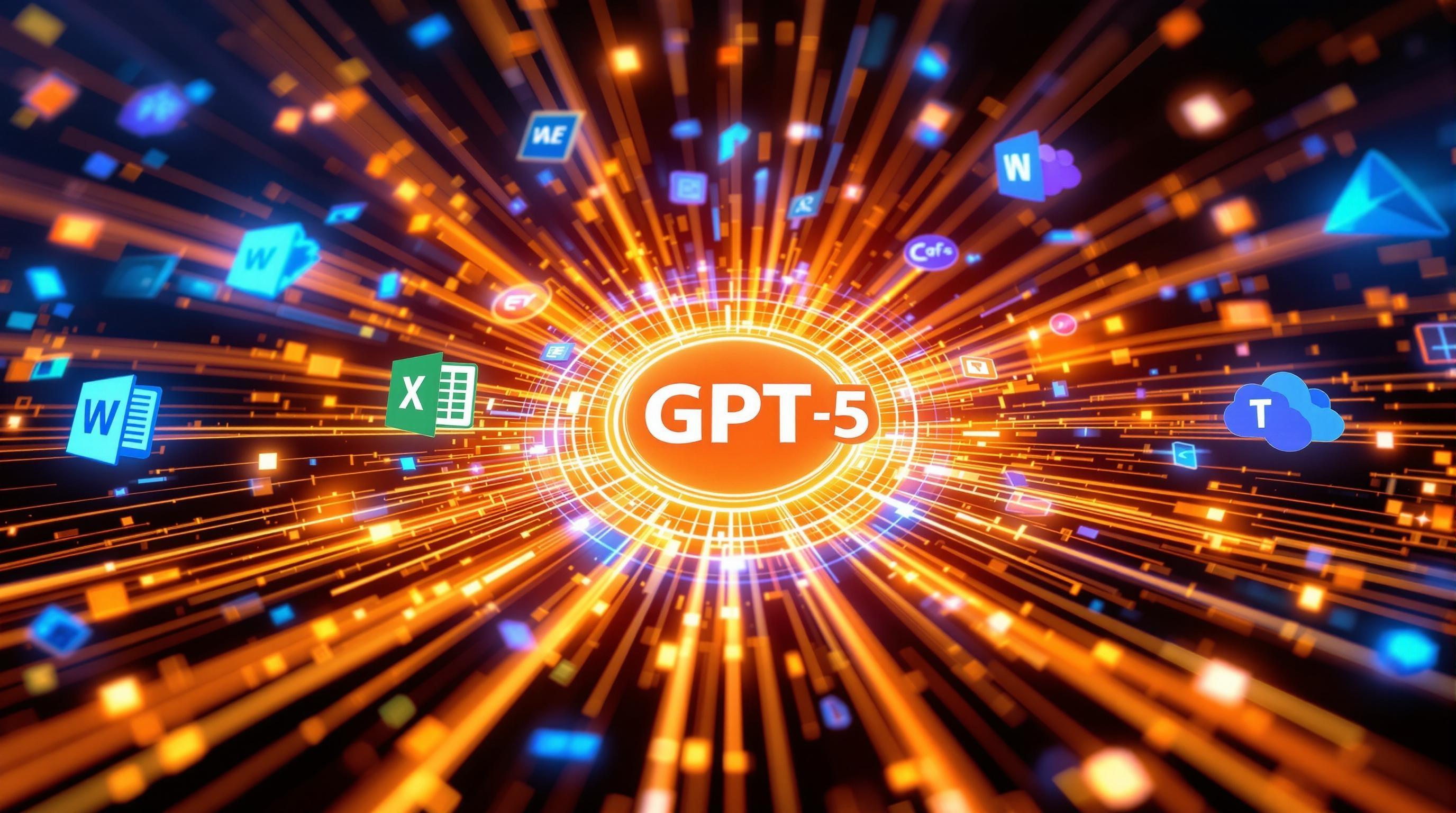GPT-5 Review: Is OpenAI's Latest AI Model a Step Forward or a Disappointment?

GPT-5's launch sparked debate, with experts praising its complex reasoning while users report a decline in personality and performance. Discover how this AI upgrade impacts different user groups and whether it truly surpasses its predecessors. For optimal results, consider refining your prompts using prompt engineering techniques to unlock its full potential.
GPT-5 Launch: A Divided Reception – Expert Praise vs. User Disappointment
The launch of GPT-5 on August 7, 2025, was met with a reception as divided as the Red Sea before Moses – a stark contrast between the glowing endorsements from AI experts and the lukewarm, sometimes scathing, reactions from the wider user base.
A Chorus of Acclaim: Experts and Companies Sing GPT-5's Praises
In the rarified air of AI thought leadership, GPT-5 was greeted with open arms. AI experts and companies lauded its advancements, particularly in handling complex reasoning and nuanced understanding. Simon Willison, a prominent figure in the AI community, tweeted his enthusiasm, stating that GPT-5 represents a "significant leap forward" and praised its ability to handle ambiguous prompts with "unprecedented clarity".
The teams behind AI development tools were particularly effusive in their praise. Every team highlighted the model's speed improvements and its enhanced ability to handle disagreements – although there was some disagreement about which features were most improved. Companies building AI development tools, such as Cursor, an AI-powered code editor designed to enhance developer productivity, Windsurf, a reverse acquihire that is Google's take on developer tools, and Vercel, all reported substantial gains in their respective applications. These tools leverage the power of AI to streamline workflows, automate repetitive tasks, and provide intelligent assistance to developers.
GPT-5’s ability to generate code with fewer errors and its improved response time has led to significant productivity boosts.
The User Backlash: A Tide of Disappointment on Social Media
However, beyond the carefully curated press releases and expert endorsements, a different narrative was unfolding. On platforms like Reddit and X (formerly Twitter), a wave of discontent began to swell among everyday users of AI chatbots. The sentiment was perhaps best encapsulated in a Reddit thread titled, simply, 'GPT-5 is horrible.'
Cold and Robotic Responses: Many users complained that GPT-5 felt less conversational and more robotic than its predecessors. One user lamented, "It feels like they’ve lobotomized it. All the personality is gone, replaced by this corporate drone that gives bland, generic answers." The warmth and human-like qualities that made earlier models appealing seemed to have been sacrificed in the pursuit of accuracy and efficiency.
Performance Issues: Others pointed to inconsistent performance, with some users reporting that GPT-5 struggled with tasks that Claude, an AI assistant known for its sophisticated reasoning and creative capabilities, handled with ease. There were grumblings about logical fallacies, a surprising inability to understand complex instructions, and a general sense that the model was somehow less intelligent than expected.
Speed Concerns: Perhaps the most consistent complaint revolved around speed. While experts celebrated improvements in processing time, many users found GPT-5 noticeably slower, especially when using function calling. "It takes forever to get a response when I'm using function calls," one user wrote. "I'm spending more time waiting than actually working."
The dichotomy between expert praise and user disappointment highlights the complex challenges inherent in developing and deploying AI models. While companies and researchers may focus on benchmarks and technical specifications, the ultimate test lies in the user experience. As we delve deeper into GPT-5's capabilities and limitations, we must consider not only what it can do but also how it feels to use.

GPT-5 Performance Deep Dive: Coding Prowess, Hallucination Reduction, and Writing Style
GPT-5 promises a lot on paper, but how does it actually perform when put to the test? Let's dive into its coding capabilities, improvements in hallucination reduction, and the evolving nuances of its writing style.
Coding Capabilities: A Mixed Bag
While GPT-5 boasts impressive benchmark scores in coding, its real-world application seems to present a more nuanced picture. It has shown strong performance across several coding benchmarks, including:
SWE-bench Verified: A standard benchmark for evaluating coding proficiency.
Aider polyglot: Demonstrating its ability to handle multiple programming languages.
Qodo AI PR Benchmark: A specialized benchmark for assessing performance in pull request scenarios. The Qodo AI team themselves have reported positive findings on this particular benchmark, suggesting that GPT-5 excels at understanding and generating code for pull requests.
However, the experiences of developers who've used it in their daily work are more varied. Some have reported that GPT-5 is capable of providing one-shot solutions to complex coding problems, generating functional code snippets with minimal prompting. Others have found it to be less reliable, with the model sometimes getting lost in the details or producing verbose outputs that require significant refinement. It's like having a brilliant but somewhat unfocused coding partner – capable of genius, but needing careful guidance. This is where tools like GitHub Copilot, an AI pair programmer that offers real-time code suggestions and helps automate repetitive tasks, can really shine by filling in those gaps.
While GPT-5 shows coding promise on benchmarks, practical application reveals a more complex reality.
Hallucination Reduction: Progress, but Still Present
OpenAI has made bold claims about reducing hallucinations in GPT-5, stating a 45% reduction in factual errors compared to GPT-4o when using web search. They also claim an 80% reduction in errors compared to o3 in "thinking mode." These numbers sound impressive, but what do they mean in the real world?
While these figures suggest a significant improvement, it's important to consider real-world hallucination rates and seek community validation. Early adopters of GPT-5 have reported a noticeable decrease in blatant factual errors. However, more subtle forms of misinformation still exist, requiring users to remain vigilant and double-check information, potentially using tools like Perplexity, which focuses on providing accurate answers with proper source citations.
Beth Barnes from METR has publicly identified instances where GPT-5 still makes factual mistakes, reminding us that even with improvements, AI models aren't infallible. It’s like a GPS that's been updated, but still occasionally directs you down a one-way street – proceed with caution!
Writing and Communication Style: The Personality Problem
One of the most prevalent concerns surrounding GPT-5 is its writing and communication style. User feedback consistently points to a perceived loss of personality and an increase in formulaic writing. It's as if the model is trying too hard to be neutral and objective, resulting in bland and uninspired text.
GPT-5's writing, while technically proficient, often lacks the spark and creativity of its predecessors.
Some users have also reported that GPT-5 provides short, insufficient replies and engages in what they describe as

Enterprise Success vs. Consumer Frustration: A Tale of Two GPT-5 Experiences
It seems that OpenAI's latest offering, GPT-5, is creating a bifurcated reality, where enterprise clients are singing its praises, while everyday users are left scratching their heads in frustration.
The Enterprise Edge: A Smooth Transition
For larger businesses and development tool companies, the move to GPT-5 appears to be a resounding success. Many are reporting significant improvements in efficiency, accuracy, and overall performance. Take Amgen, for example, who lauded GPT-5's improved ability to navigate ambiguous requests. This is especially valuable for tasks that require a nuanced understanding of context and complex problem-solving.
"GPT-5's capacity to handle ambiguity has been a game-changer for us," says a senior data scientist at Amgen. "It's reduced the need for constant fine-tuning and allows us to focus on more strategic initiatives."
This sentiment is echoed across various sectors, suggesting that GPT-5's advancements are particularly well-suited for complex, enterprise-level applications. Tools such as Salesforce Platform, a leading cloud-based CRM, are leveraging the power of the model for enhanced automation and customer service capabilities.
The Consumer Conundrum: Disappointment and Regression
On the flip side, the experience for individual users, especially those on free tiers or even Plus subscriptions, has been less than stellar. Many are reporting a noticeable decline in the quality of responses, an increase in irrelevant or nonsensical outputs, and a general sense that GPT-5 feels like a step backward.
One of the most significant grievances is the limited functionality afforded to Plus subscribers. While they are paying for premium access, they often find themselves restricted from utilizing the advanced reasoning models that are supposedly the hallmark of GPT-5. This restricted access creates a sense of being shortchanged, as users feel they are not getting the full value of their subscription.
Restricted Access: Limited access to advanced reasoning models.
Inconsistent Performance: Outputs often feel less coherent and reliable.
Frustration: A general sense of disappointment and regression compared to older models.
Adding insult to injury, many users are lamenting the loss of access to older, more reliable models like GPT-3.5. These models, while not as cutting-edge, were often preferred for their consistency and predictability. The forced upgrade to GPT-5, even with its supposed improvements, has left some users feeling like they've lost a valuable tool.
The Reasoning Riddle: A Matter of Explicit Prompting
A recurring theme in user complaints revolves around the dynamic routing system that GPT-5 employs. While the intention might be to optimize performance and tailor responses, the result is often inconsistent reasoning. The model seems to struggle to grasp the underlying intent of a query without explicit prompting, leading to frustrating and time-consuming interactions.
For instance, a user might ask a simple question requiring a logical deduction, only to receive a vague or irrelevant answer. Only by explicitly guiding the model through each step of the reasoning process can a satisfactory response be obtained. This need for constant hand-holding defeats the purpose of having an advanced AI model in the first place.
The Price of Progress: API Access and Token Costs
Another point of contention is the accessibility and pricing of the GPT-5 API. With a price tag of $1.25 per million input tokens, it's becoming increasingly expensive for developers and smaller businesses to leverage the model's capabilities. This high cost barrier effectively limits access to GPT-5 for a significant portion of the user base.
Feature | GPT-3.5 | GPT-5 | |
|---|---|---|---|
Reasoning | Good | Inconsistent | |
Accessibility | High | Limited | |
User Satisfaction | High | Low |
In conclusion, the rollout of GPT-5 paints a complex picture. While enterprise clients are reaping the benefits of its advanced capabilities, individual users are grappling with limited functionality, inconsistent performance, and high costs. The key takeaway is that OpenAI needs to address the concerns of its consumer base to ensure that GPT-5 becomes a truly accessible and valuable tool for everyone, not just a select few. This divergence in user experience raises crucial questions about the direction of AI development and the importance of catering to diverse user needs, which we'll explore further in the next section examining ethical considerations.

GPT-5: Incremental Improvement or a Missed Opportunity?
GPT-5 has finally arrived, but the question on everyone's mind is: does it truly push the boundaries of AI, or does it merely represent an incremental upgrade in a rapidly evolving field?
GPT-5 in Today's Competitive Landscape
The AI landscape is fiercely competitive, with models like Google Gemini and Claude constantly vying for supremacy. GPT-5 enters this arena not as a lone champion, but as one among many powerful contenders. Its performance needs to be assessed within this context: is it setting new standards, or simply keeping pace with the advancements of its rivals?
Playing Catch-Up, Not Leading the Pack
While GPT-5 undoubtedly boasts impressive capabilities, a prevailing sentiment suggests that it's playing catch-up rather than forging a completely new path. This isn't to say it's a failure, but it does temper expectations of a revolutionary leap forward. For instance, consider using Prompt Engineering techniques to get the most out of these models.
"GPT-5, while powerful, doesn't feel like a giant leap. It's more of a refinement of existing capabilities rather than a paradigm shift."
That's the general feeling across the industry right now.
Anders Arpteg's Perspective
Anders Arpteg, a respected voice in the AI community, has observed that GPT-5 trails behind competitors on certain key metrics. While his specific data isn't available, his observation points to a crucial reality: GPT-5 may not be the undisputed leader across all benchmarks.
Reasoning and Coding Comparisons
Specifically, when comparing GPT-5 to models like Grok 4 and Claude Opus 4.1 on reasoning and coding benchmarks, the differences appear less pronounced than many had hoped. Grok, for example, has been lauded for its ability to handle complex queries with a touch of humor, while Claude continues to impress with its sophisticated understanding of nuanced language. GPT-5 holds its own, but doesn't necessarily dominate these areas. Understanding how these models stack up in benchmarks can be made easier with the tools available on our Compare page.
Incremental vs. Revolutionary Improvement
The core debate revolves around whether GPT-5 represents an incremental improvement or a revolutionary one. The consensus leans toward the former. It's a more polished, refined version of its predecessor, GPT-4, but it doesn't introduce groundbreaking new concepts or capabilities that fundamentally alter the AI landscape. To stay abreast of the evolving narrative, keep tabs on AI News.
Nathan Lambert's Take on User Satisfaction
Nathan Lambert's perspective introduces another layer to the discussion: user satisfaction. While GPT-5 may not be a revolutionary leap, does it deliver a better user experience? Is it more reliable, more intuitive, and more effective in addressing user needs? These factors ultimately determine its success in the real world.
Strengths of GPT-5
Despite the criticisms, GPT-5 possesses notable strengths:
Professional Coding: It excels in coding tasks, generating cleaner, more efficient code than previous iterations.
Reduced Hallucination (with Web Access): When equipped with web access, GPT-5 demonstrates a marked reduction in hallucinations, providing more factual and reliable information.
Speed for Simple Queries: For straightforward queries, GPT-5 delivers rapid responses, making it a valuable tool for quick information retrieval.
Tool Calling: GPT-5 demonstrates a proficiency in tool calling, seamlessly integrating with external tools to enhance its capabilities.
Weaknesses of GPT-5
Conversely, GPT-5 exhibits certain weaknesses:
Conversational Personality: Its conversational personality can sometimes feel lacking compared to other models.
Consistent Reasoning: Maintaining consistent reasoning across complex, multi-step tasks remains a challenge.
Meeting User Expectations: Given the immense hype surrounding its release, GPT-5 may struggle to meet the lofty expectations of some users. If you aren't getting the results you want, try using an AI Summarizer to better understand and refine your prompts.
Value Proportional to Cost: The cost of using GPT-5 may not always be justified by the value it provides, particularly for users with simpler needs.
The Balancing Act
The future of AI models like GPT-5 hinges on striking a delicate balance: meeting user needs with affordable responses, while simultaneously pushing the boundaries of advanced AI capabilities. Can OpenAI achieve this balance? The answer will determine whether GPT-5 is remembered as a stepping stone or a missed opportunity. This will be crucial as we continue to track all the latest AI News.

Keywords: GPT-5, GPT-5 review, OpenAI GPT-5, AI model, AI performance, GPT-5 coding, GPT-5 hallucinations, GPT-5 writing, GPT-5 speed, GPT-5 limitations, GPT-5 enterprise, GPT-5 consumer, GPT-5 pricing, GPT-5 vs Claude, AI development tools
Hashtags: #GPT5 #AIReviews #ArtificialIntelligence #OpenAI #TechNews
For more AI insights and tool reviews, visit our website https://best-ai-tools.org, and follow us on our social media channels!
Website: https://best-ai-tools.org
X (Twitter): https://x.com/bitautor36935
Instagram: https://www.instagram.com/bestaitoolsorg
Telegram: https://t.me/BestAIToolsCommunity
Medium: https://medium.com/@bitautor.de
Spotify: https://creators.spotify.com/pod/profile/bestaitools
Facebook: https://www.facebook.com/profile.php?id=61577063078524
YouTube: https://www.youtube.com/@BitAutor
Recommended AI tools
Perplexity
Search & Discovery
Clear answers from reliable sources, powered by AI.
DeepSeek
Code Assistance
Efficient open-weight AI models for advanced reasoning and research
GitHub Copilot
Code Assistance
Your AI pair programmer and autonomous coding agent
Notion AI
Productivity & Collaboration
The all-in-one AI workspace that takes notes, searches apps, and builds workflows where you work.
Cursor
Code Assistance
The AI code editor that understands your entire codebase
Lovable
Code Assistance
Build full-stack apps from plain English


